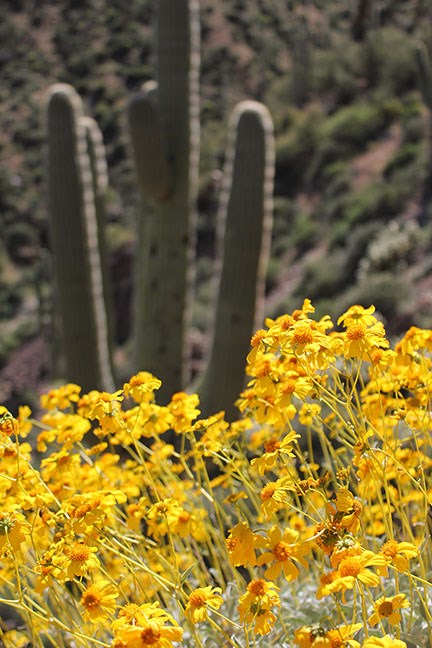
NPS Photo/ J. Smith Tonto National Monument is a wonderful place for viewing the showy spring wildflowers. In a good year, the hillsides are covered with gold poppies. Blooms of purple lupine, red firecracker penstemon, and white desert chicory along with many other species are scattered among and above the gold. 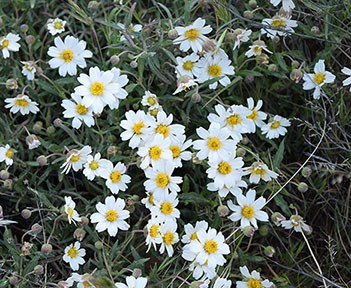
NPS Photo/ S. Treener Blackfoot DaisyMelampodium leucanthumThis perennial plant can grow up to 20" in height. It has ash gray, narrow leaves and white ray flowers with yellow disks. It blooms March through December. 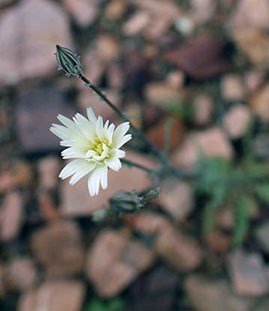
NPS Photo Desert ChicoryRafinesequia neomexicanaThis annual plant can grow up to 20" in height. It has dark green, narrowly lobed leaves with white ray flowers. It blooms mid-February through May. 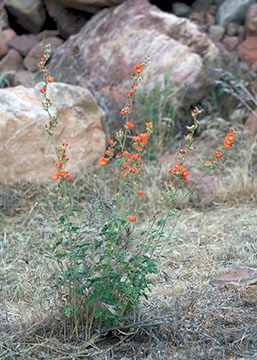
NPS Photo Desert Globemallow (Sore-Eye Poppy)Sphaeralcea ambiguaThis perennial plant grows in large clumps up to 40" high. They have grayish, maple-like leaves with scalloped edges and bright orange flowers. They bloom year-round. Uses: - Used medicinally for upset stomach, as an antirheumatic, as a cathartic, for colds, as birth control, for venereal diseases, as a poultice for swellings and sores, and as an eyewash. 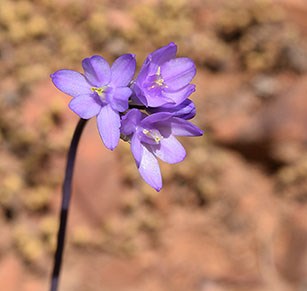
NPS Photo/ S. Treener Desert Hyacinth (Blue Dicks)Dichelostemma capitatumThis perennial lily can grow up to 30" in height. It has a few dark green, grasslike leaves and lavender flowers in a terminal cluster on a slender stem. It flowers February through March. 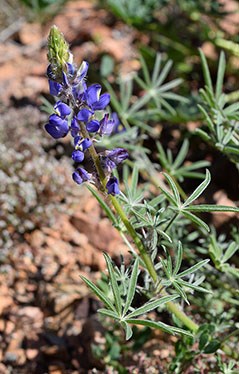
NPS Photo/ S. Treener Desert LupineLupinus sparsiflorusThis perennial plant can grow up to 16" in height and is a favorite of bees. It has dark green, palmately divided leaves with pale blue to violet pealike flowers. The petals are short, wide, and curve upward. The flowers are followed by a flattened pod. Lupines can adjust their leaflets during the day to absorb maximum sunlight. It blooms January through May. 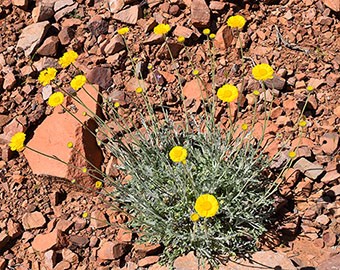
NPS Photo/ S. Treener Desert MarigoldBaileya multiradiataThis annual plant grows up to 2' in height. It has grayish, woolly, lobed leaves and yellow daisylike flowers on long, nearly leafless stems. It blooms March through October. 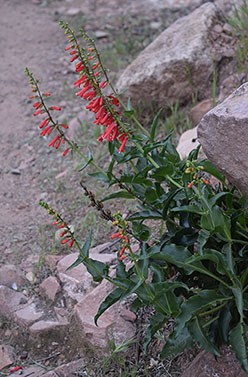
NPS Photo/ S. Treener Firecracker PenstemonPenstemon eatoniiThese plants can grow up to 2' in height. They have dark green, leathery, mainly basal leaves and bright scarlet red, tubular flowers. It blooms February through June. Gila county Liveforever (Rock Echeveria)Dudleya saxosaThis succulent can grow to 1 1/2' in height. It has grayish green leaves and a red stem. The flowers have a 5 yellow petals and an reddish orange sepal. It blooms April through June. Gooding's VerbenaGlandularia gooddingiiThis pernnial plant can grow to up to 2' in heigth. It has bright green, hairy leaves and lavendar to pink flowers. The flowers had 5 joined, notched petals and form showy headlike clusters. It blooms April through June. 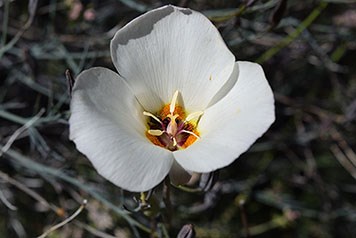
NPS Photo/ S. Treener Mariposa Lily (Sego Lily)Calochortus nuttalliiThis plant can grow up to 20" in height. It has grayish green, narrow, grasslike leaves with white to lavender tuliplike flowers. It has a yellow petal base marked with a crescent-shaped purple band. It blooms May through June. Uses: - The bulbs were dried and perserved for winter use, eaten raw, or roasted, peeled, then eaten. 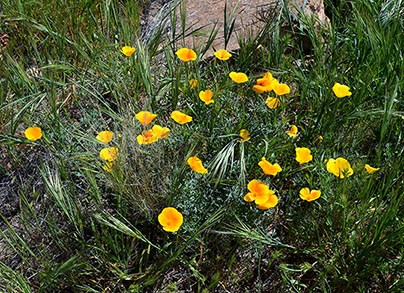
NPS Photo/ S. Treener Mexican Gold PoppyEschscholiza mexicanaThis annual plant can grow up to 16" in height. It has pale bluish green, fernlike leaves and orange cup-like flowers. The flowers remain open only in full sunlight. Entire slopes can because a seas of gold from the poppies after abundant winter rainfalls. It blooms mid-February through May. 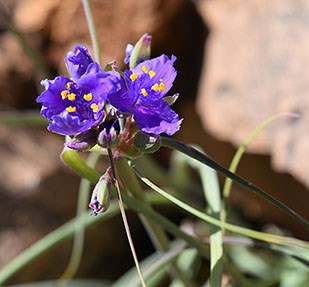
NPS Photo/ S. Treener Prairie SpiderwortTradescentia occidentlisThis perennial plant can grow up to 2' in height. It has long green leaves with terminal blue-violet flowers. The flowers have three petals and six stamens with yellow anthers. Spiderwort flowers close by mid-day and last only one day. It blooms May through October. 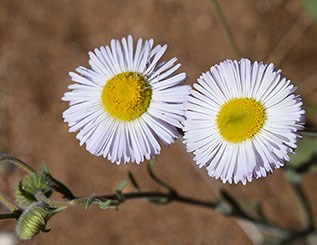
NPS Photo/ S. Treener Spreading FleabaneErigeron divergensThis annual plant can grow up to 20" in height. It is a hairy plant with basal leaves. It has numerous ray flowers that are lavender, almost white with yellow disks. It blooms March through November. Uses: - Parts could be used to make an oil to treat fleas. 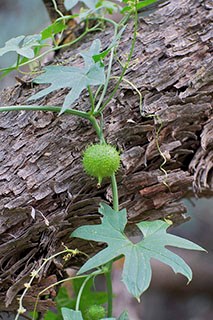
NPS Photo/ M. Stewart Wild Cucumber (Gila Manroot)Marah gilensisThis perennial plant is a long vine that climbs over shrubs and small trees. It has dark green leaves with white star-shaped flowers. The flowers are followed by round, green, fleshy fruit with spines. It blooms March through April.
Published: May 10, 2017
|
Last updated: May 10, 2017
